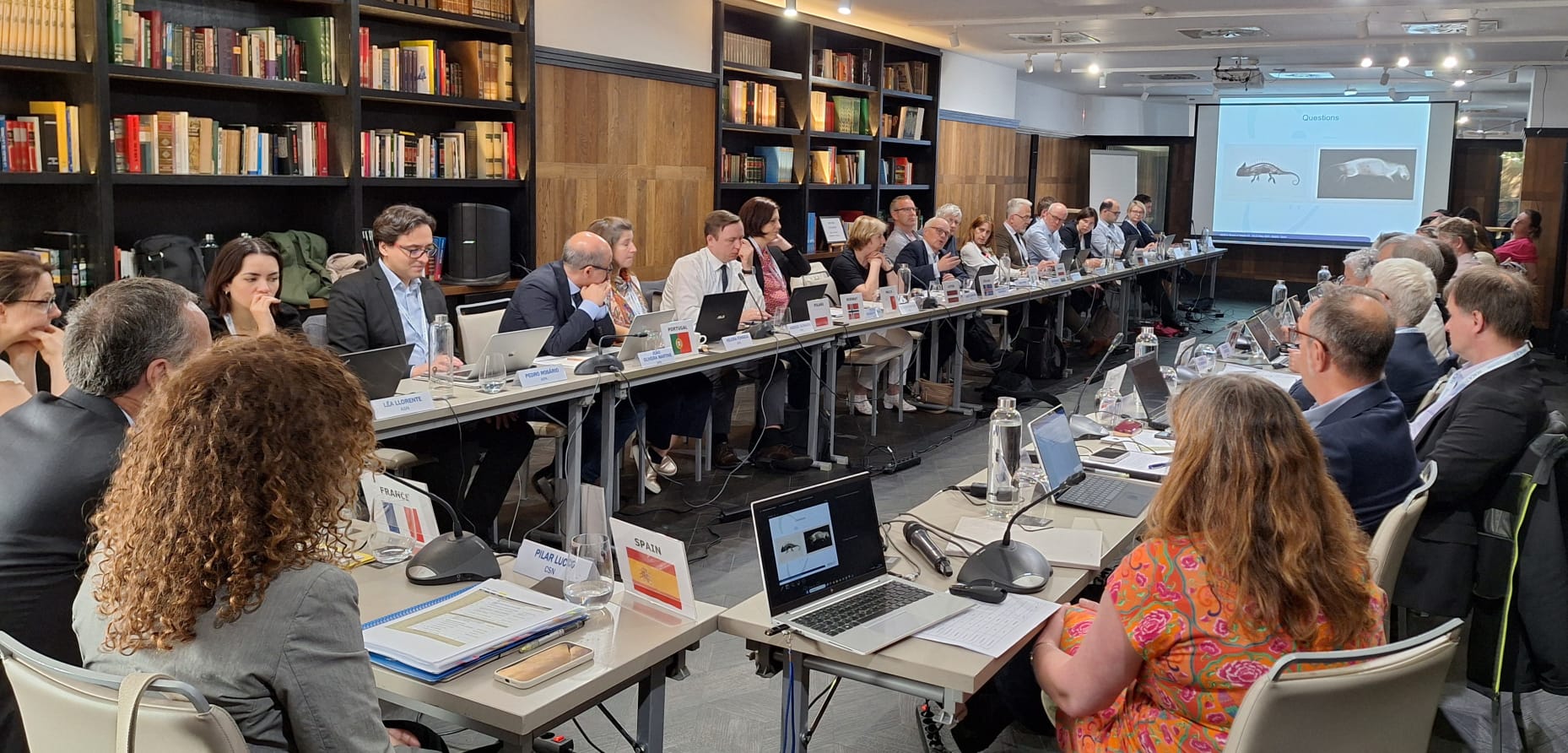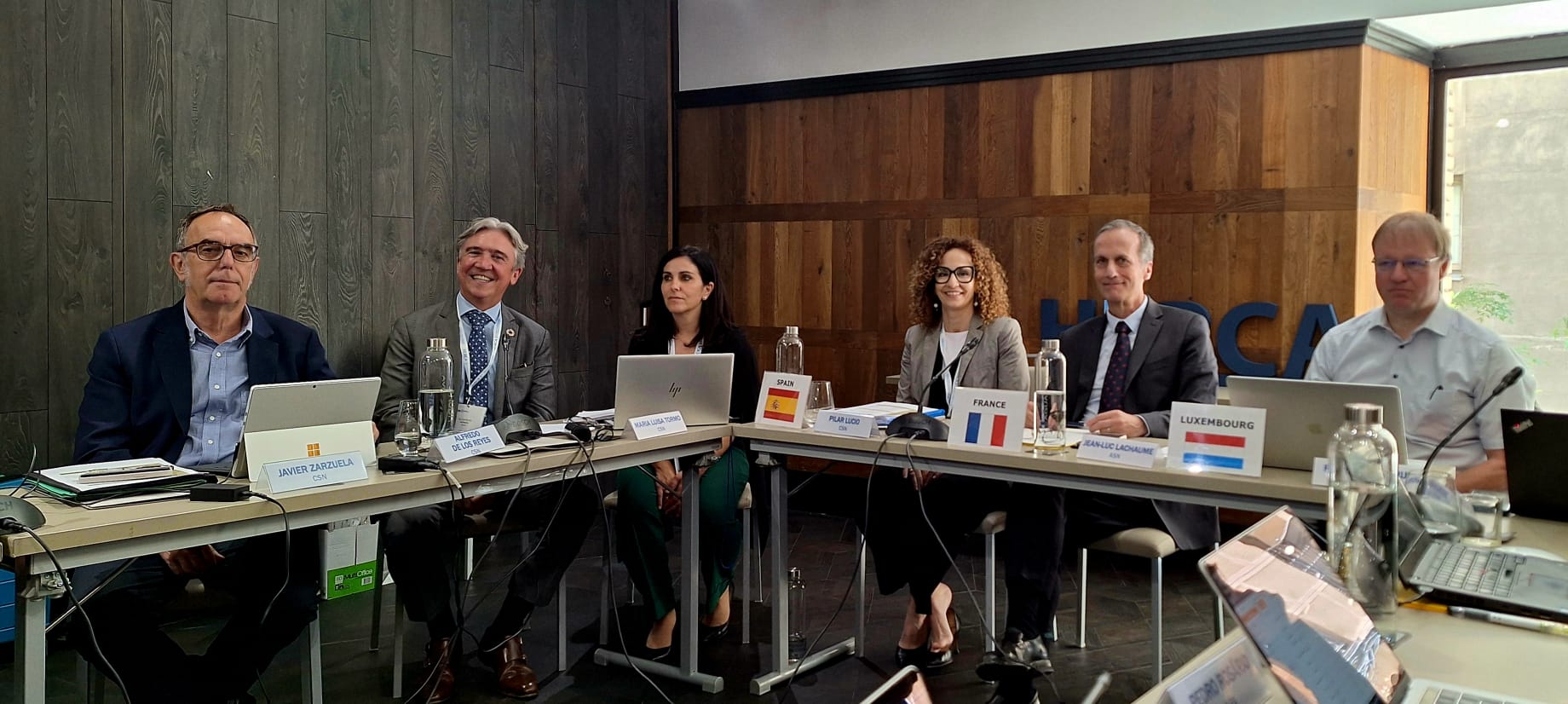Contenido principal
2024
Madrid hosts the Heads of the European Radiological Protection Competent Authorities (HERCA) Board of Heads meeting
The Spanish Nuclear Safety Council organised the meeting where the conclusions of the international workshop on the European Directive on Radiological Protection were presented
The Board approved the document presented by the medical applications group on inspections of radiotherapy facilities

The Spanish Nuclear Safety Council (CSN) organised the 33rd meeting of the Heads of the European Radiological protection Competent Authorities (HERCA) Board of Heads, whose vice-chair is the CSN commissioner, Pilar Lucio. The meeting was held in Madrid after the workshop dedicated to the challenges presented by the implementation of the European Directive on Radiological Protection.
The meeting allowed the Board to report on the representation activities developed since the previous meeting, held in November 2023, which are contributing to further increase the impact and influence capacity of the association among the international radiation protection community.
Javier Zarzuela, CSN Technical Director for Radiological Protection and chair of the organizing committee of the workshop, presented the main milestones identified, which will serve to draw up the roadmap towards the improvement and greater harmonization of the European regulation on Radiation Protection.
The HERCA working groups presented the progress of their projects. Some of them also presented several specific initiatives and their work plans for the coming months for approval by the Board. Among them, the Medical Applications group presented the final report on the conclusions of the “MedInspector” workshop dedicated to inspections in radiotherapy facilities. There is also a new inspection campaign on the implementation of the principle of justification of medical exposures to be developed in the next two years and the launch of a new awareness campaign aimed at referring doctors.
The Board also approved the document presented by the HERCA network dedicated to the exchange of information on occupational dose records. This document includes the results of a survey on occupational exposure and the long-term dose record keeping in the national platforms dedicated to this effect in the different member countries.
The meeting included the participation as observers of other relevant international organizations in Radiation Protection, such as the International Atomic Energy Agency (IAEA), the European Commission and the Nuclear Energy Agency (NEA). The representatives of each organization presented their respective activities; international cooperation projects, documents and publications of interest and projects in which they are currently immersed. Likewise, HERCA invited on this occasion the Ibero-American Forum of Radiological and Nuclear Regulatory Organizations (FORO) to present its technical program.
After closing what was the thirty-third meeting of the Committee, its Chair Jean-Luc Lachaume thanked the Spanish regulator for its efforts in organizing the two HERCA activities in Madrid.
Workshop in Madrid

The international workshop on the European Directive for the protection against the dangers of ionizing radiation was closed by CSN commissioner and HERCA vice-chair, Pilar Lucio. She recalled the importance of this type of meeting to improve regulatory frameworks worldwide, ensuring that the processes included in them are solid and as effective as possible. Lucio encouraged that the cooperation materialized during the workshop between all the agents involved in European regulation on radiation protection to be maintained and further developed along the same direction.
Speakers from a dozen countries met to address topics such as the protection of workers in environments with high radon concentrations and in activities involving the processing of naturally occurring radioactive materials (NORM), during the different sessions. They also commented the methodology for monitoring the doses for exposed workers and the recognition of radiation protection experts and medical physics experts. In addition, other important topics were discussed such as the justification of medical exposures and imaging for non-medical purposes, as well as the use of new technologies such as artificial intelligence.
Additionally, the European Commission's representative, Stefan Mundigl, presented the process of the European Directive transposition in the Member States as seen by the Commission.
The International event has brought together more than 140 experts in Radiation Protection from across Europe as well as representatives of the main international organizations and stakeholders.
About HERCA
HERCA was created in 2007 to initiate an exchange of knowledge and experiences in order to facilitate practical and harmonized solutions to important regulatory issues in radiation protection. Although the regulatory framework in this matter within the European Union is subject to regulations developed by the European Commission, such as Regulations or Directives, the practical application of their requirements can be implemented in very different ways by each member state.
The Association is composed of representatives of 56 European competent authorities in Radiological Protection, belonging to 32 European countries (including the 27 EU Member States).
Working groups are established by HERCA to address issues of common interest (education and training, emergency preparedness and response, medical applications, natural radiation sources, research and industrial sources and practices, veterinary applications).
Check here the glossary of technical terms

